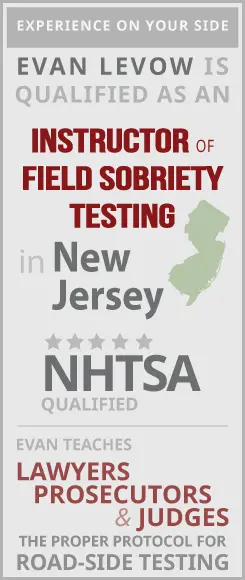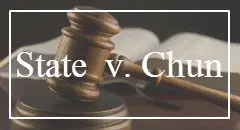The manner in which the officer conducted the stop of your vehicle and how the officer conducted the road side investigation leading to your arrest will impact how your New Jersey DWI / DUI case is defended. Some mistakes committed by law enforcement include:
- Conducting a stop when the officer has received an anonymous phone call regarding a possible offense. If a phone call is made regarding a perceived intoxicated driver, the caller making the claim must give specific information about the vehicle and the alleged offense. That information must match up with the vehicle that is actually stopped by the police.
- Conducting a stop based on no evidence or probable cause. The officer must have an articulable reason to stop the car, and must be able to describe the motor vehicle violation or offense leading to the stop with specificity.
- Initiating a stop due to weaving within a lane on the road. In some situations, excessive weaving may be probable cause for a stop, but in the vast majority of cases, an officer may not have probable cause to stop a vehicle based upon one weaving maneuver.
- Conducting a stop based upon a roadway sign that is incorrect or improperly posted. Each roadway sign must meet the standards as prescribed by the Manual for Uniform Traffic Control Devices.
- Conducting a stop due to low speeds. When a roadway sign dictates a speed limit, it means that drivers are not to exceed the set amount of speed, but this does not mean that you can be stopped for driving under that limit. Such a stop can be sustained only where the officer alleges that the slow driving is dangerous or so aberrant under the circumstances to result in a traffic violation.
- Creating an improper roadblock for the purposes of conducting DUI / DWI checkpoints. Roadblocks or checkpoints have many requirements that police departments must follow in order to be legal.
- Initiating a traffic stop for the purposes of reviewing the driver’s license and registration information. An infraction must have taken place in order for a legal stop to be initiated.
- Conducting a traffic stop without being able to accurately identify the violating vehicle. A law enforcement officer who makes a traffic stop must be able to testify that the vehicle he or she stopped was the vehicle directly involved in the infraction.
- Using a law enforcement vehicle to block a driver from leaving the scene of a stop, unless the driver has been legally detained by the officer.
- Failing to accurately apply the law when initiating a traffic stop. Law enforcement officers have to be sure that an infraction has been committed before initiating a stop. Stops and detaining a driver cannot be based on hunches.
- Conducting a DUI/DWI arrest without proper proof that the individual being arrested was operating or intended to operate the vehicle while under the influence. For example, sitting in a parking lot of a bar with the ignition on to stay warm, as long as there is no intention to drive the vehicle from the lot, does not constitute “operation”.
- Detaining the driver too long at the scene of the stop, without probable cause to believe that the driver is under the influence in order to intimidate or cause delay. Individuals who are detained under suspicion of intoxicated driving must not be detained for periods that would be deemed unreasonable.
- Entering a driver’s private residence without permission or probable cause. An officer cannot follow a driver into his or her house in “hot pursuit” from a simple traffic stop. Doing so is a violation of the Fourth Amendment of the Constitution of the United States.
- Improperly administering a breath test or improper collection of a blood or urine sample.


